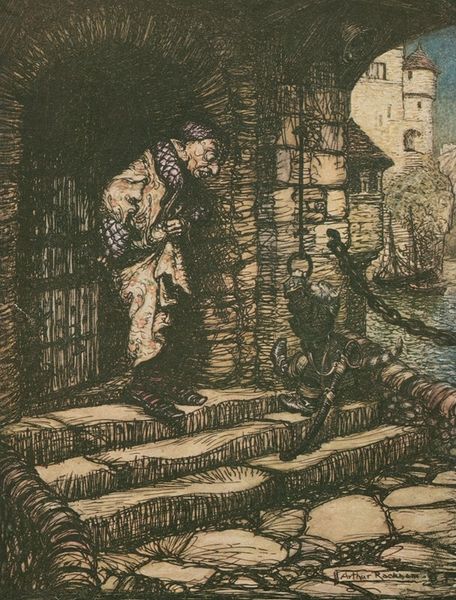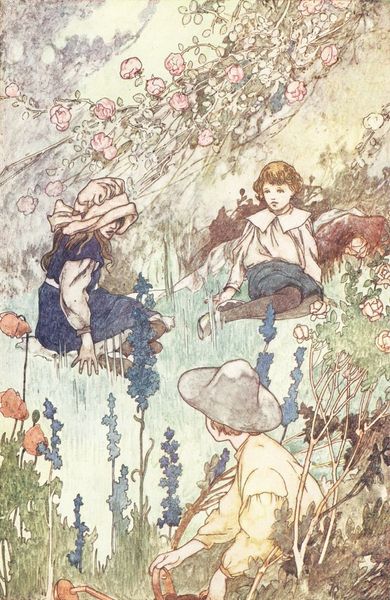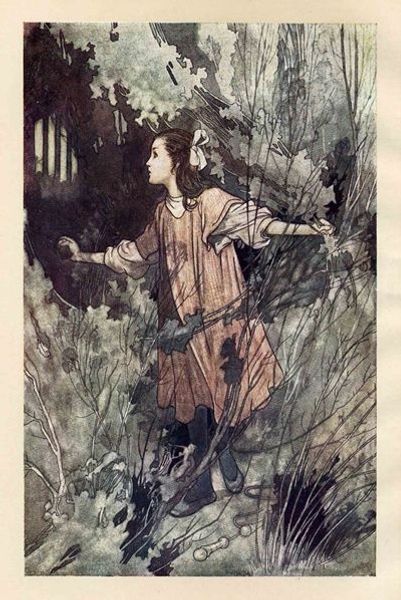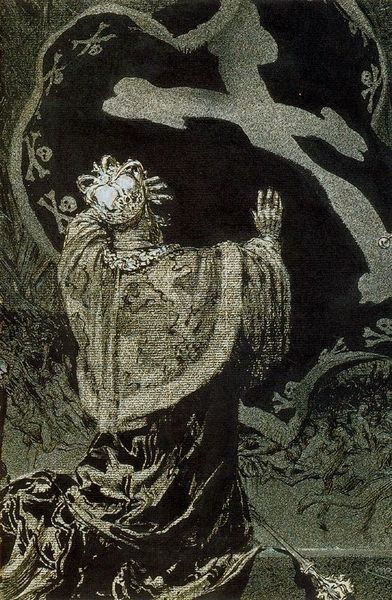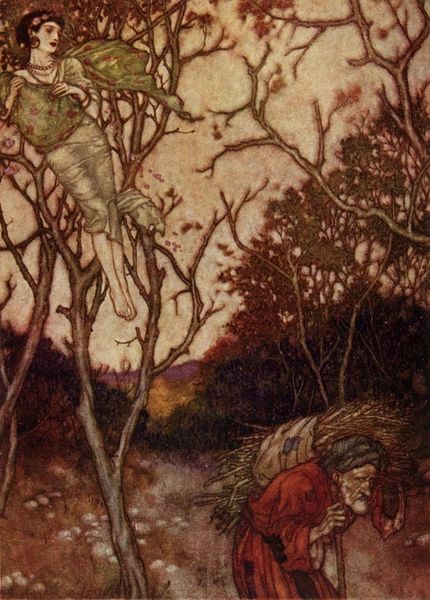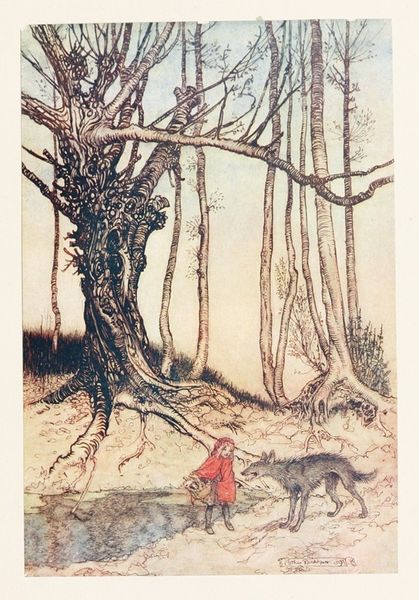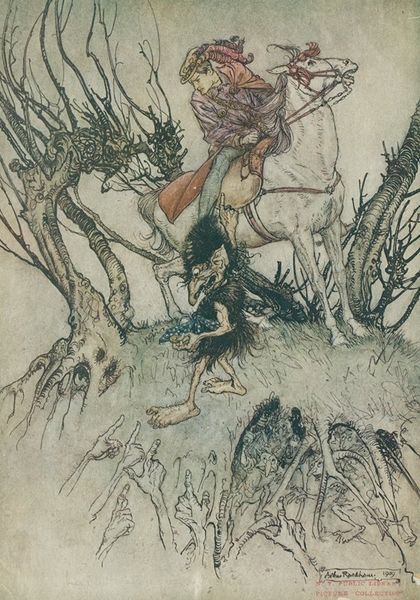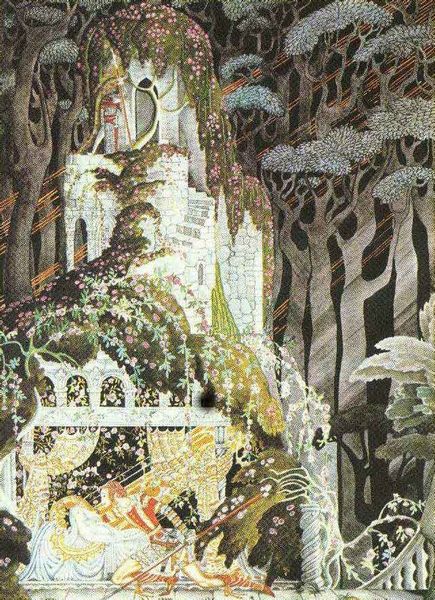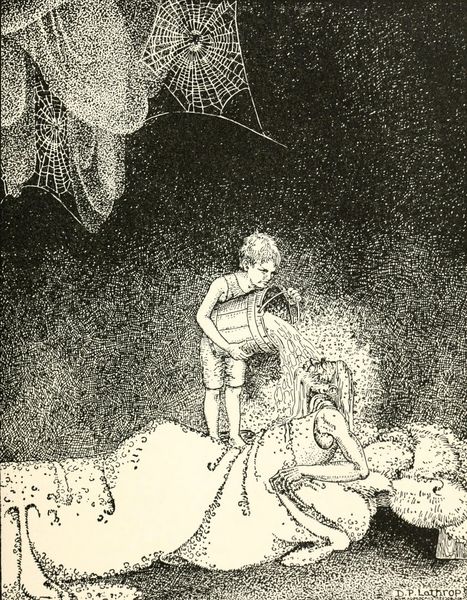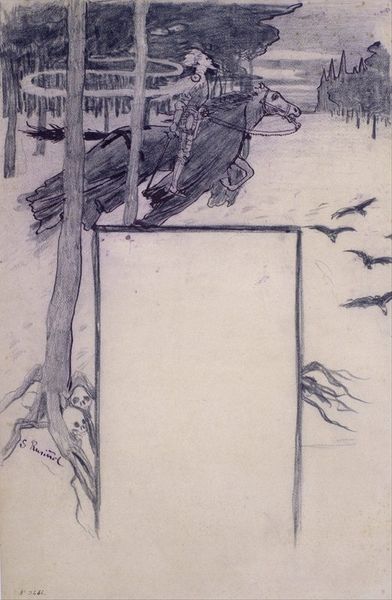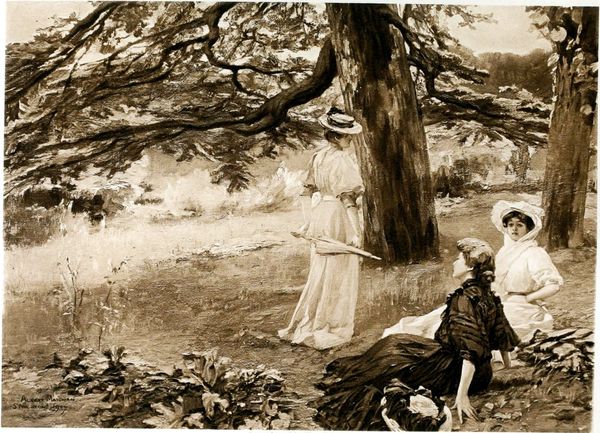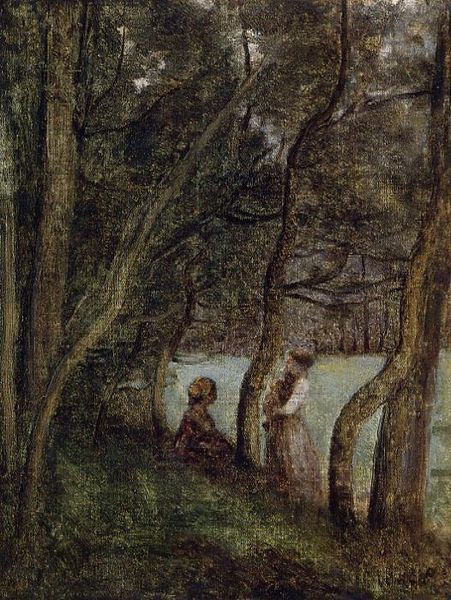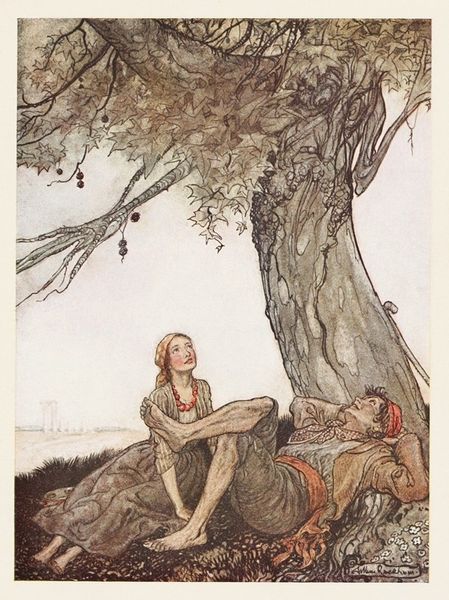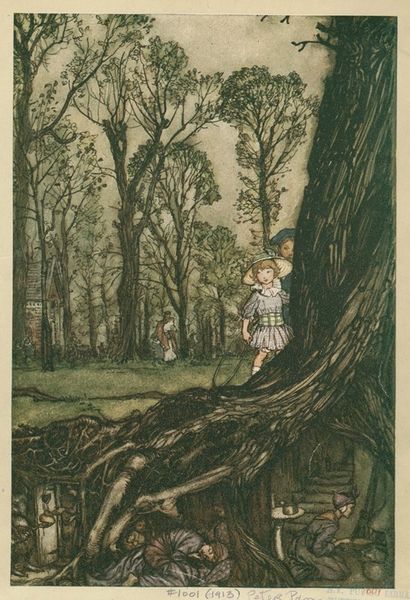
drawing, coloured-pencil
#
drawing
#
coloured-pencil
#
arts-&-crafts-movement
#
landscape
#
figuration
#
coloured pencil
#
symbolism
#
watercolour illustration
#
mixed medium
#
mixed media
#
watercolor
Copyright: Public domain
Editor: This is "The Secret Garden" by Charles Robinson, created around 1912 using coloured pencil. It's… melancholic. The colors are muted, and everything feels a little overgrown, a little forgotten. What symbols stand out to you in this drawing? Curator: The most striking thing is the ruined garden itself. Notice how nature has started to reclaim the urns. Consider what a formal garden, especially one with statuary, symbolized in the early 20th century - control, order, the dominance of man over nature. What does its disintegration here signify? Editor: A loss of control, maybe? A world turned upside down? Curator: Perhaps. The figure standing at the top of the steps… do you see a face of longing or sorrow? Is the figure at threshold or about to fully descend? And what is mirrored below? Look at the composition. Robinson deliberately obscures. Consider this against the backdrop of the Arts & Crafts Movement, which often idealized nature. Editor: So, even within this idealized vision, there's this undercurrent of decay, or a commentary about idealized versions. It almost feels like memory… slightly distorted. Curator: Exactly! It is also about memory itself, filtered, selective, and deeply entwined with our personal experiences and emotional states. That reflected face asks, "Can you truly see?" or more personally, "Can I truly see?". Editor: That really changes how I see the whole piece. The garden isn’t just a place; it’s a state of mind, or the manifestation of one. Curator: Yes! The picture creates space for inward reflection and cultural continuity to take place. We see through symbols and art, what we choose to believe in ourselves.
Comments
No comments
Be the first to comment and join the conversation on the ultimate creative platform.
